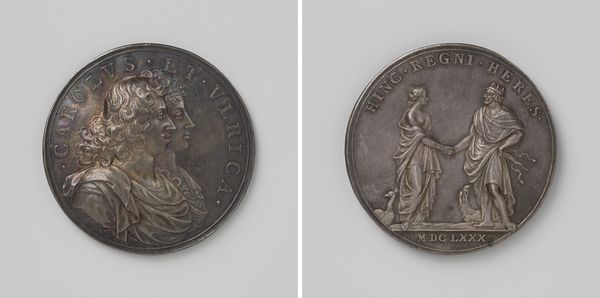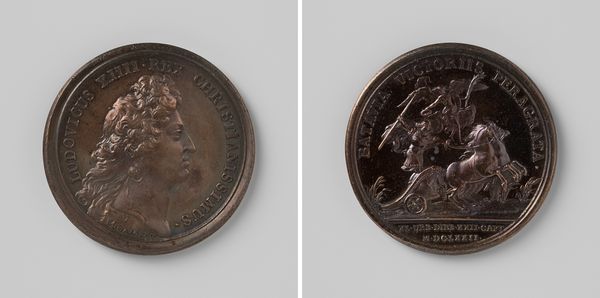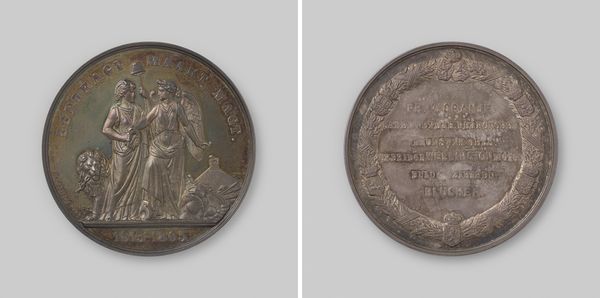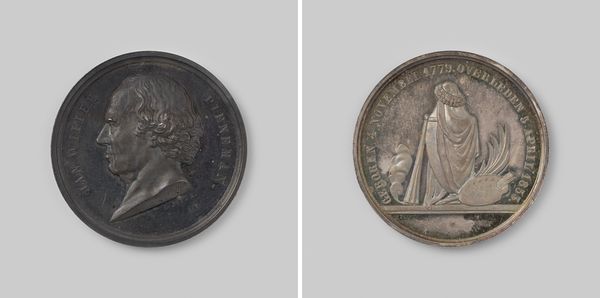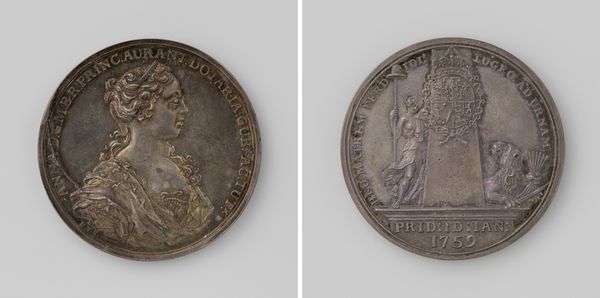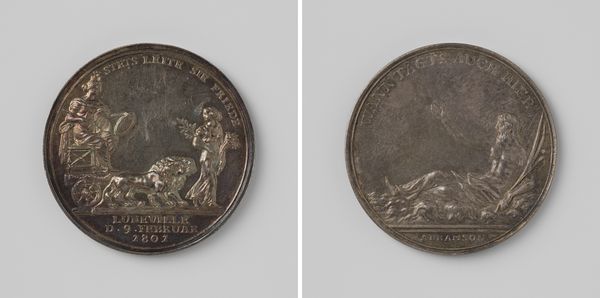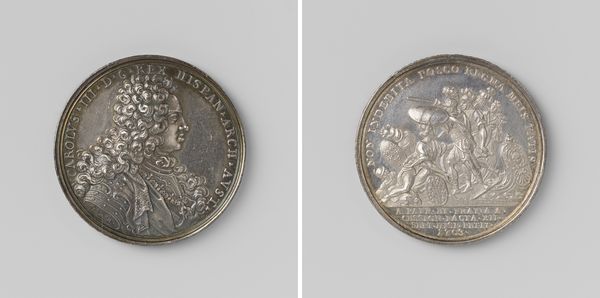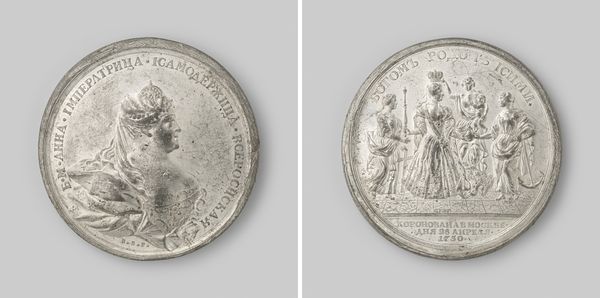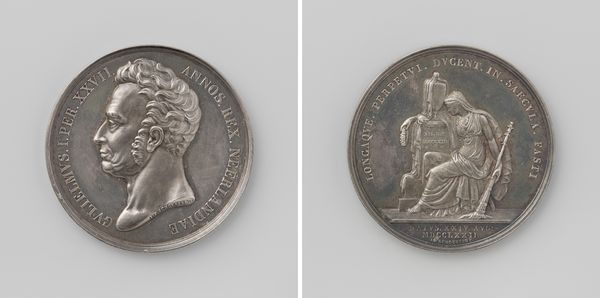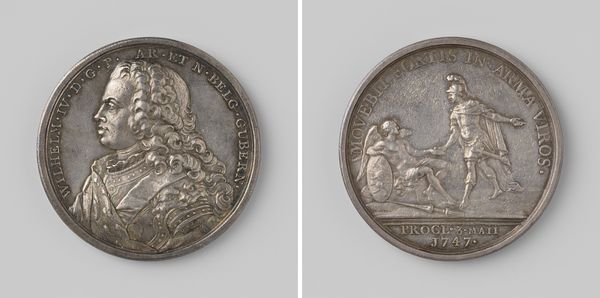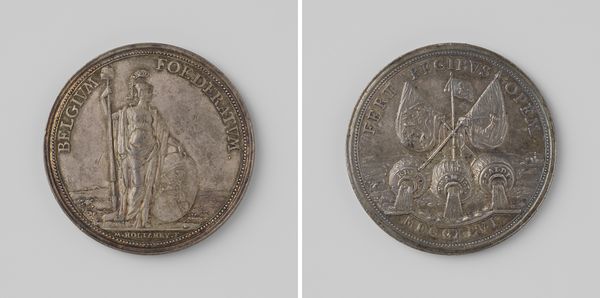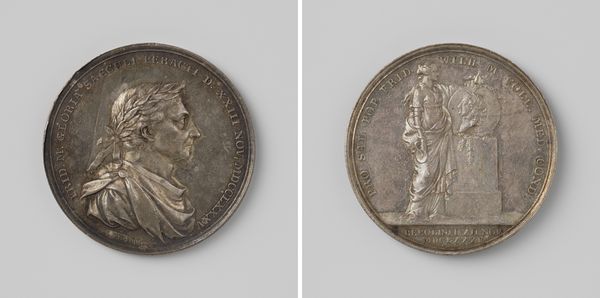
Vrede van de Pyreneen, op de ontmoeting tussen de Franse en de Spaanse koning 1699 - 1703
0:00
0:00
metal, sculpture
#
portrait
#
baroque
#
metal
#
sculpture
#
sculpture
#
history-painting
Dimensions: diameter 4.1 cm, weight 37.26 gr
Copyright: Rijks Museum: Open Domain
Curator: Let's turn our attention to this fascinating metal sculpture. It’s titled “Peace of the Pyrenees, at the meeting between the French and the Spanish King” and was created sometime between 1699 and 1703 by Jean Mauger. Editor: It looks so...official. Almost aggressively diplomatic, you know? Like they're trying really hard to sell the idea of peace. And the wigs! I could get lost in those baroque swirls forever. Curator: Indeed! These commemorative medals, as objects, held considerable socio-political power. They weren't merely artistic expressions; they were tools of statecraft, circulated to solidify the image of Louis XIV, here "Ludovicus XIII Rex Christianiss" King of France. The event this represents, The Peace of the Pyrenees, marked the end of a long conflict between France and Spain and reshaped the power dynamics of Europe. Editor: Ah, so a bit of spin, then. History bronzed, or in this case, silvered! But look at the way those figures are rendered, it's so stiff! I can almost feel the weight of expectation bearing down on them. The shaking of hands, a bit underwhelming maybe? As the dawn of diplomacy… I can't put my finger on it. Curator: The scene on the reverse, showing the royal meeting, is rendered in a rather conventional baroque style. Notice the deliberate emphasis on the regal bearing of both monarchs, and the inscription Pax Aut Turnas --Peace and you should leave. Also keep in mind these images were meant to convey a certain narrative to those viewing and holding the sculpture in their hand. Consider its distribution: to diplomats, nobles, wealthy merchants to impress. Editor: Definitely! But thinking beyond the PR, I like pondering about the real people—Louis XIV, for one. Stuck in those elaborate clothes, those expectations…it humanizes everything, in a slightly pathetic way. Curator: Exactly. Objects like this offer us valuable access point to the machinations and myth-making that underpinned early modern European power. Editor: Yeah. It's like holding a little piece of propaganda, but a beautiful one. Makes you wonder what our coins and medals will say about us centuries from now!
Comments
No comments
Be the first to comment and join the conversation on the ultimate creative platform.
